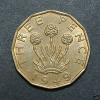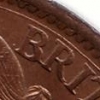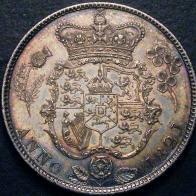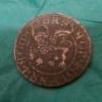Well I've now managed to obtain a really nice F176, again from John Jerrams (Topcarp2). Thanks for the heads up Jerry. Really pleased with this acquisition as the 176 is clearly very scare, even in low grade. So to get one like this is excellent.
I'd say it's aUNC/GEF, with decent hair detail, although as so often with this era, the breast plate is somewhat deficient. Britannia's head well struck up, however. Tiny circular metal flaw on the King's head.
Managed to knock him down from £320 to £280 best offer, which, given the condition, is a very reasonable price, with free postage and exclusive of any auction buyer fee. I must say, he does a good sell, and his write up's are always a pleasure to read.
 Coinpublications.com
Coinpublications.com





